|
Are you tired of the feasting? We are at the tail end of feasting after the Easter season with the celebration of the Solemnity of Corpus Christi last Sunday. We experienced the 50 days of Easter, the Solemnity of the Ascension of the Lord, Pentecost, the Solemnity of the Holy Trinity, and finally, the Solemnity of Corpus Christi. In my family, we have partaken in a fair share of feasting on treats, and I am almost ready for a period of fasting again. The transition from the Easter season into Ordinary Time can lead to a misunderstanding of what the Church is calling us to during this liturgical season. It is easy to see Ordinary Time as boring or as a time for laziness, but if we look at the liturgical calendar and journey along with the Apostles in the Scriptures, we can see that it is just the opposite. Reflecting back on the Scriptures read during Lent and the Triduum, we see the disciples’ confusion about what Jesus was preparing them for. He warned them often that He had to suffer, die, and rise, and yet they were still in hiding and unsure of their mission after the crucifixion and Resurrection. Scripture states that they were locked in the Upper Room in fear of the Jews after Christ’s death and then that they were left “looking intently at the sky” after Christ’s Ascension. It is not until Pentecost, when the Holy Spirit descends upon the disciples, that the gift of understanding is given to them and they are able to go forth and spread the Gospel message. In celebrating the Solemnities of the Ascension and Pentecost after Easter Sunday, we come to understand our role as Christians on mission. We are reminded that we too are equipped with the Holy Spirit for the call to go out to all the nations and proclaim the Good News, baptizing in the name of the Trinity. We next celebrate the Solemnity of the Holy Trinity, a day to contemplate that the Holy Trinity is relationship itself, and we are invited into that relational exchange of love among Father, Son and Holy Spirit. As the Catechism explains, "By the grace of Baptism ‘in the name of the Father and of the Son and of the Holy Spirit,’ we are called to share in the life of the Blessed Trinity” (CCC 264). This Solemnity invites us to ponder the vastness and majesty of God in three persons and His great love for His creation. Finally, the Church celebrates the Solemnity of Corpus Christi (Latin for “Body of Christ”). Christ, after the Ascension, remains with us in the bread and wine transformed into His Body and Blood during the celebration of the Mass. This Solemnity focuses our attention and hearts on the greatest gift to the Church: the Body, Blood, Soul and Divinity of our Lord in the Holy Eucharist. Together with the celebration of the other feasts after Easter Sunday, the celebration of Corpus Christi is a moment of grace given to us today that propels us into this season of Ordinary Time. If we look at the calendar, the Church has been preparing our hearts to enter into this celebration of Corpus Christi. We needed Jesus to establish the Eucharist (Holy Thursday), to suffer, die and rise (Triduum), to return to the Father (Ascension), and to send the Church an outpouring of understanding for Her mission through the Holy Spirit (Pentecost). As a result, we can ponder and enter into the life of the Holy Trinity (Solemnity of Holy Trinity). All of these feasts prepare the Church for the Solemnity of Corpus Christi and for our journey into Ordinary Time. The Holy Eucharist is the strength for our journey in the ordinary. The Body and Blood of Jesus assists us in following the will of God as we receive God Himself. The Solemnity of Corpus Christi can be celebrated with hope that Jesus is with us in this Holy Sacrament, and the Church is calling us to continued growth in Ordinary Time. Questions for Reflection: How can you use Ordinary Time in order to grow in your faith? What graces from Lent and Easter can help propel you into Ordinary Time?
0 Comments
A little more than 100 miles south of Berlin, Germany, just north of the Ore Mountain Range, lies the small town of Lomnitz. In the early 20th century when millions of Europeans journeyed to the United States in search of a better life, a small group of immigrants from Lomnitz was processed through Ellis Island. To those immigrants, the United States federal government assigned the last name “Lomnitzer.” Just as those from New York are called New Yorkers, so too were those from Lomnitz to be called Lomnitzers. Although I am not German by blood, there is a special place in my heart for the small town of Lomnitz and the group of Lomnitzers that settled in America. When my paternal grandfather was born, he was left by his biological mother at the doorstep of a convent. The loving nuns found a home for the baby and he was adopted as an infant. He then became Charles Lomnitzer, a beloved member of the Lomnitzer family. It is through the generosity of the Lomnitzers that I, Tyler Lomnitzer, three generations removed, have a wonderful life and continue to bear the family name with honor and gratitude. The Lomnitzers recognized the dignity of each and every human person. Charles’s biological mother was unable to care for him, but the Lomnitzers nevertheless saw Charles as a gift and blessing to their family. Just as America provided a beacon of hope and the promise of a better life to the Lomnitzers, so too did the Lomnitzers provide a beacon of hope to my grandfather. I found the story of my family to be a powerful moment of prayer last Thursday, January 18 during the annual Vigil Mass for Life. The Mass takes place at the Basilica of the National Shrine of the Immaculate Conception in Washington, D.C. the night before the annual March for Life. Packed into the basilica were thousands of Catholics from all over the country who had gathered to pray for the legal protection of the unborn and for an increase in the recognition of the sanctity of life from conception until natural death. We gathered under the leadership of the bishops—Cardinal Dolan from the Archdiocese of New York was the celebrant and homilist—to come together as a Church in fellowship and prayer. It was the nuns’ prayer and commitment to life that found a home for my grandfather and paved the way for my life in this world; it will be the prayer and commitment to life of all those present at the basilica that will lead to (God-willing) thousands of beautiful lives to come. It was also the prayer and commitment to life of the Lomnitzers that allowed them to find room in their home for a little boy who needed parents. The Lomnitzer lineage is my lineage, not by blood, but by love. Please join me in prayer for all those who need parents, or lack other necessary means of survival. Question for Reflection: What are some ways that you can touch the life of someone you encounter so that the other might recognize their own life’s gift and sanctity? I am going to begin this post with a familiar teaching: “The Eucharist is ‘the source and summit of the Christian life’” (CCC 1324). Christ divinely instituted this Sacrament at the Last Supper, ordering the disciples to continue that Sacrifice “in remembrance of [Him]” (Luke 22:19). For those who believe in the Real Presence of Christ in the Eucharist, it unites earth and heaven, the “communion in the divine life and that unity of the People of God by which the Church is kept in being” (CCC1325). Even for those who do not believe, Christ died for all, though not all choose to avail of the redemption won for them by the shedding of His blood.
I can think of no better reminder of that last point than the traditional Eucharistic procession celebrating the Solemnity of The Most Holy Body and Blood of Christ, also known as Corpus Christi. There is no other liturgical feast during which the Blessed Sacrament is venerated outside of a church. To the passers-by, the procession is impossible to miss: scores of altar servers dispensing clouds of incense and, if you’re lucky, a Knights of Columbus color guard with drawn swords precede an elaborate tent being carried over a golden monstrance elevated by the priest (dressed in beautiful liturgical vestments, no less) while the faithful bring up the rear singing Eucharistic hymns. This spectacle is not merely ecclesiastically pleasing to the eyes, but, among other functions, introduces Christ to the world outside of the Church. In the Eucharist, we recall the words of Christ now repeated by the priest: “Take this, all of you… this is my Body… this is… my Blood, the Blood of the new and everlasting covenant, which will be poured out for you and for many for the forgiveness of sins” (it should be noted that “for many” refers to all who come to believe and not an exclusion/denial of others). The Church does not wish to deny anyone an encounter with Christ but instead continually seeks to evangelize the world. The Eucharistic procession, then, is an invitation extended by the faithful to bystanders to reciprocate the infinite love God has always shown to them, whether it is recognized or not. This invitation may not be immediately accepted, but, given time and the right conditions, the seeds planted in their minds could result in conversion and the desire to join Christ’s body, the Church (see 1 Corinthians 12:12-27). The Solemnity also reminds me of the call to continuing conversion, the universal call to holiness. Each of us who bear the name “Christian” are to become more like the One whom we love and in whom we live— we are called to become what we consume. Christ comes to dwell within us; we live our lives now in Him. We are “living monstrances”, enthroning the Lord in our hearts and showcasing Him through our good works. The same Divine Host that we receive in this Sacrament is the same elevated in the procession. Processing outside of the walls of church serves to proclaim that Christ continues to come into the world through the Church. Our Lord dwells in each of us by virtue of our Baptism. We carry Him into the world just as we carry the monstrance into the streets. Even so, there will always be those who scorn our belief in the Real Presence. The Eucharist, like the Cross are forever “stumbling blocks. It is the same mystery and it never ceases to be an occasion of division” (see CCC 1336, John 6:22-69). The fact that the Eucharist can never be fully understood by the human mind must not be a condition of belief. As St. Anselm of Canterbury once declared, “For I do not seek to understand in order that I may believe, but I believe in order to understand. For I believe this: unless I believe, I will not understand.” Because Christ Himself has told us, “This is My Body”, what reason could remain for doubt (Matthew 26:26-28)? St. Thomas Aquinas recognized this when he composed the traditional and fitting Corpus Christi hymn, “Adore te devote”: O Godhead hid, devoutly I adore Thee, Who truly art within the forms before me; To Thee my heart I bow with bended knee, As failing quite in contemplating Thee. Sight, touch, and taste in Thee are each deceived; The ear alone most safely is believed: I believe all the Son of God has spoken, Than Truth's own word there is no truer token. … Jesu! Whom for the present veil'd I see, What I so thirst for, O vouchsafe to me: That I may see Thy countenance unfolding, And may be blest Thy glory in beholding. Amen. Thomas Wong is an Undergraduate at the Catholic University of America in Washington, D.C. In his final words as Supreme Pontiff, Benedict XVI reminded us from the balcony of Castel Gandolfo that he was “simply a pilgrim beginning the last leg of his pilgrimage on Earth.” In doing so, he reminded us, the faithful, that we too are on an earthly pilgrimage. Benedict’s goal, as well as ours, is the Kingdom of Heaven. As pilgrims, we travel around and seek the ways that will lead us to our destination. Though at times we go down the wrong path, we trust that, having faith in God, He will always bring us back to our goal, to be with Him. Thus, we are truly a “Pilgrim Church,” a community of believers on a voyage to Christ.
This past Sunday, we celebrated the great solemnity of The Most Holy Body and Blood of Christ, also known as Corpus Christi. The history of the feast goes back all the way to the early 1200s in modern day Belgium. St. Juliana of Liege, a Norbertine canoness, had a vision of a full moon with a dark spot. The spot, she believed, represented the absence of a feast dedicated to the Blessed Sacrament outside the season of Lent. After reporting her visions to her confessor and bishop, the bishop instituted such a feast in the diocese in 1247. Several years later, Pope Urban IV extended the celebration to the universal church in 1261. It was he who requested St. Thomas Aquinas to write hymns for the feast day. We know them today as the Pange Lingua and Panis Angelicus. Urban successors, most especially Clement V in 1311, reinforced the original decree and promoted the observance of the feast. One of the most beautiful and traditional aspects of the celebration is the procession of the congregation behind the Eucharist encased in a monstrance. On a personal note, this day has always been one of my favorites growing up. I loved walking with my family and friends around the church building (often stopping traffic!), all following our pastor holding the monstrance up as high as he could. In many ways, the Corpus Christi procession mirrors our pilgrimage (our procession) on earth. Together, with other members of the faithful, we are led toward God, whose real presence on earth is in the Eucharist. The Most Blessed Sacrament is the point in which heaven and earth meet. Not only is it our guide on earth, but also our guide to heaven. Processing around, following the Eucharist is a reminder that what we do on earth can lead us to an everlasting reward. By receiving the Eucharist, we are given the strength (both spiritual and physical) to continue on our earthly journey. As St. Thomas Aquinas once wrote, “Per tuas semitas duc nos quo tendimus, ad lucem quam inhabitas” (By your ways lead us to where we are going, to the light where you live.) Victor David is a recent graduate of The Catholic University of America in Washington, D.C. Why do Christians, and in particular Catholics, pray? What is the purpose of prayer and how does it have any effect on me? Growing up in New England, I find that more people don’t see the significance of praying to God, even if they believe in his existence. They don’t see how a relationship with God can bring any meaning into their lives. On the other side of the coin, I think that while the majority of practicing Catholics realize that prayer, especially the prayer we call the Mass, is important, we can’t really articulate what the purpose of prayer is. We fail to grasp its necessity in fulfilling the deepest longings in our hearts.
While this may sound problematic if unanswered, the beautiful solution lies at what the past two popes say about prayer. If I were give you a SparkNotes summary as to why Popes Benedict XVI and Francis believe prayer to be so important, it would be three words: God is Love. This description of God comes from the first letter of John 4:16 – “God is love, and he who abides in love abides in God, and God abides in him.” Well, you’re probably thinking that sounds nice and pretty, but what does God being “love” have to do with me praying? The Catechism of the Catholic Church, as noted by Pope Benedict XVI in his General Audience on May 11, 2011, states that “In prayer, the faithful God’s initiative of love always comes first; our own first step is always a response.” So the Catechism is defining prayer as receiving and responding to God initiating himself to us as love. When we are praying, we are not merely attempting to talk to an open space in our room or in a chapel; we are receiving the love of God. This receiving makes prayer a form of participating in an event or experience, not just a conversation. That event we’re talking about is the love of God, because it was and continues to be revealed through his son, Jesus Christ. So the first point is that prayer is the participation (receiving and responding) in God’s love, making prayer not only a conversation with God, but also an event. This is all very good, but how does one participate in this “event”? This is where Mass becomes important, because this experience occurs every time we go to Mass when the bread and wine become the Mystical Body and Blood of Christ. We participate in this prayer by receiving the Body and Blood of Christ. We’ve come to understand that the Mass is the foundation and apex of Catholic prayer. Why, then, do we participate in additional forms of prayer, such as the Rosary, the Liturgy of the Hours, and so on? Why can’t I just go to Mass and get everything I need there? I like to think that the best responses are counter-questions, so let me try to answer this by asking the following: why wouldn’t someone, who receives God as Infinite Love in the Eucharist, want to have any form of separation from him? Think about it. If we were to just go to Mass, and nothing more, we wouldn’t be perpetually united with God. We’d have a good foundation with Mass, but that’s like saying there is no need to build the rest of a house (i.e., the roof) because it has a good foundation. Another analogy I like to think of is a family event, such as a family vacation or Thanksgiving dinner. You don’t build relationships with loved ones by just showing up for family gatherings (or at least I hope not). You spend time with them outside the event as well! If I love my parents, I will not just show up for Thanksgiving. I will want to talk with them on a regular basis to catch up and see how things are going. Spending time with God sounds good, but where do I start? What do we say to God in prayer? Pope Francis offers us some advice. In his daily homily for Mass on June 20th, he said the following: “There is no need to fritter away words in order to pray: the Lord knows what we want to say to him. The important thing is that our first word be “Father.” This prayer that says ‘father’ first is the Our Father that Jesus gave to the apostles in the Gospel of Matthew (6:7-15). Pope Francis then makes an additional point. He says that rather than praying to the “God of cosmos,” we must pray to the “Father” who begot us. To go further, we pray “our” Father because he is not generic or anonymous, but the “One” who has given life to each and every one of us. When we go back and say, “God is Love,” God is not some distant figure. He is “Our Father,” and that is how we can pray to him. We can use the very words that Jesus taught us. Prayer is our willingness to participate in the love of God, who is our Father, and his manifestation of love to us is not just a conversation, but also an experience we are fortunate to perpetually be part of if we so desire. That is why prayer is important. Without prayer, we cannot receive nor can we answer to our Father’s invitation of His Infinite Love. So go to Mass, pull out your Rosary, read scripture, and spend time with God because it is an invitation to be united in love with your heavenly Father. You could even start by simply saying, “Our Father…” Andrew St. Hilaire is the Assistant to the Director of the Catholic Apostolate Center Liturgy is just exhilarating! What could give you more of a spiritual rush than a thirty minute homily being read straight from the page, a cantor who sings with the voice of an angelic chicken, an altar server who must be awakened from her mid-Mass nap to bring the Missal to the altar, and a lector who proclaims the Word of God with monotone gusto and the speed of a snail?
Okay, yes, liturgy on the surface can be quite unexciting. We can often leave Mass unnourished, and critiquing everything that left us unsatisfied. Yet, everything that we critique, everything that leaves us unsatisfied, is what is essential to liturgy itself. Liturgy is a reflection of us, the faithful. So, perhaps, we are quite unexciting; however, I don’t believe this is the case. I think liturgy takes on a different type of excitement, an excitement that fulfills us in a way that nothing of this world can compare to. There are many times when I’m having a bad day, and I hope and pray that a large McDonald’s chocolate shake will give me the nourishment and comfort that I need to continue on. As I sit in the drive-thru line, I’m excited about my chocolate shake to the point where I can even taste it! Ten minutes later, after consuming 22 fl oz. of ice cream goodness, I find myself sick and even more unnourished than before. The excitement of the chocolate shake is an excitement of this world that will never last. It does not even come close to the nourishment and excitement that the Eucharist brings to those who believe. Everything we do flows from liturgy. Sacrosanctum Concilium (Constitution on the Sacred Liturgy) says that “the liturgy is the summit toward which the activity of the church is directed; it is also the font from which all her power flows” (SC 10). Just as we bring bread and wine to the Altar to be transformed into the Body and Blood of Christ, when we come forward to receive Christ, we bring our very selves to the Altar of God to be transformed and commissioned to Christ’s ministry on earth. This has been the purpose of Eucharistic liturgy since the beginning of the Church. In the second century, Justin Martyr defended the Eucharistic practices of the Church by stating the following: “through the word of prayer that comes from God, the food over which the Eucharist has been spoken becomes the flesh and blood of the incarnate Jesus, in order to nourish and transform our flesh and blood” (Apologia I, 65-66). We are unable to do Christ’s ministry here on earth without the fruits of our liturgical worship. Every time we celebrate Mass, we are coming to the source, the origin, of all life and ministry. How exciting is that? If we truly understand that our Eucharistic celebration is where it all begins, then no boring homily, no awful cantor, no napping server, and no monotone lector can ever lesson the excitement that abounds beneath the surface of liturgy. No matter what liturgical experience we may have on the surface, the excitement of liturgy should pour forth into our lives, helping us to engage in the ministry that Jesus established for us on earth. As I mentioned, liturgy is a reflection of us, the faithful. It is us doing the work of God, on behalf of God and for God’s people. Because we are only human, liturgy may not live up to the idea of excitement that we are used to. However, liturgy is home to a different excitement, a lasting excitement, an excitement that will always be present. It’s just a question of whether we’ve come to Mass open to this excitement. Have we come to Mass for a chocolate shake, or have we come to be sent forth to proclaim the Gospel of the Lord? Stephen Schad is working towards his MA in Liturgical Studies from the University of Notre Dame, and is currently the Director of Liturgy and Music at Saint Maximilian Kolbe Catholic Community in Houston, TX. |
Details
Archives
July 2024
Categories
All
|
About |
Media |
© COPYRIGHT 2024 | ALL RIGHTS RESERVED

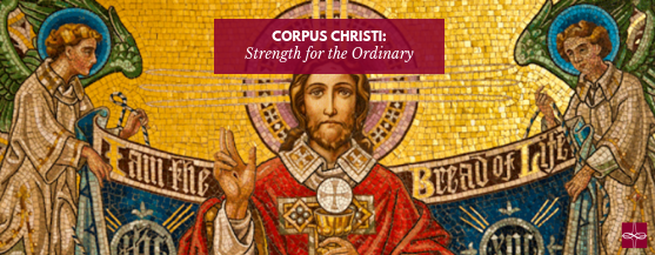

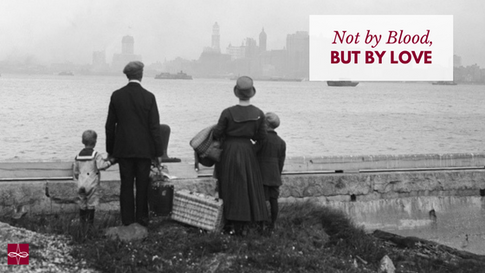

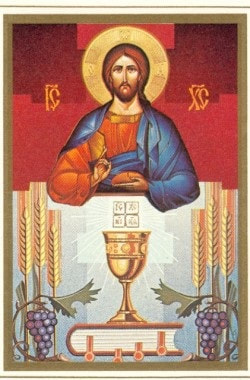
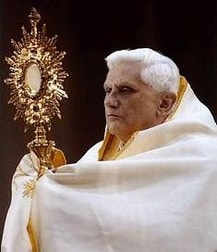
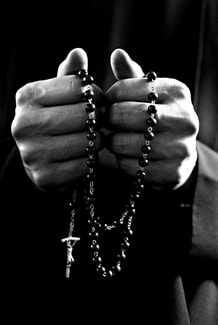

 RSS Feed
RSS Feed